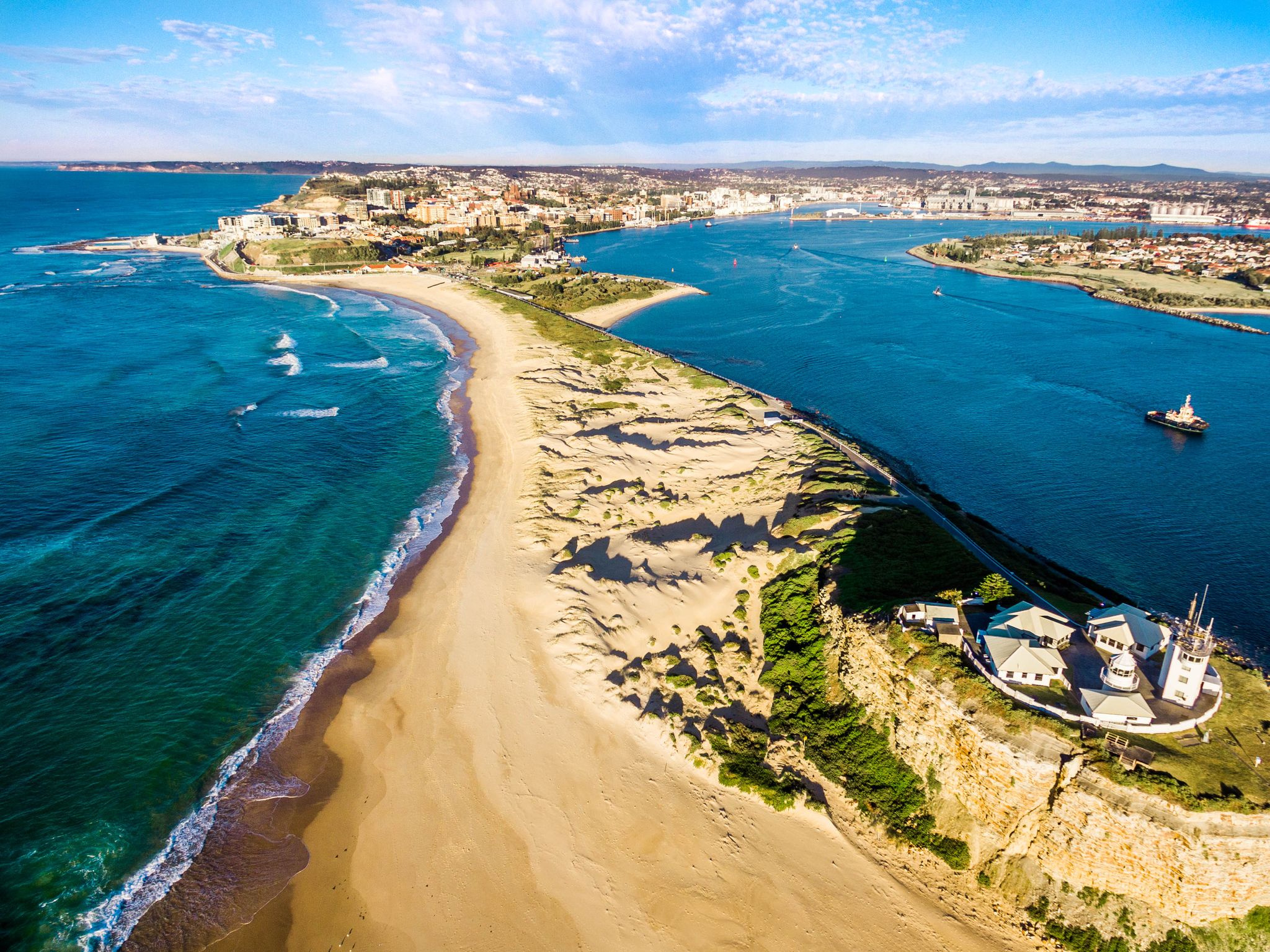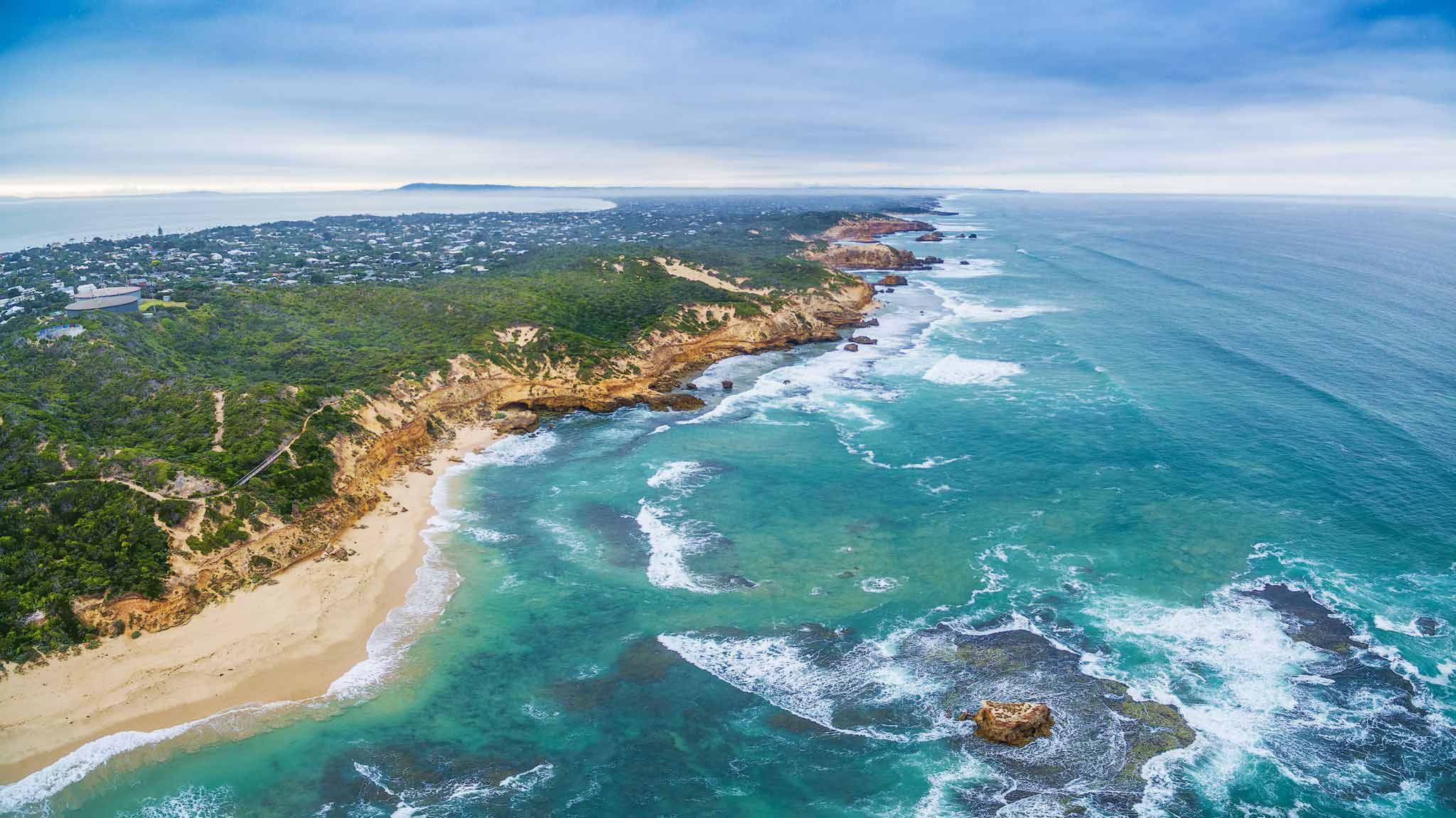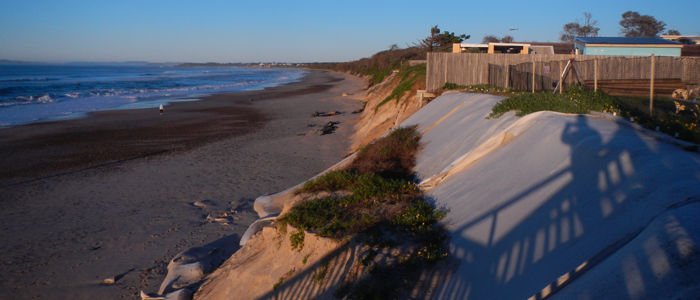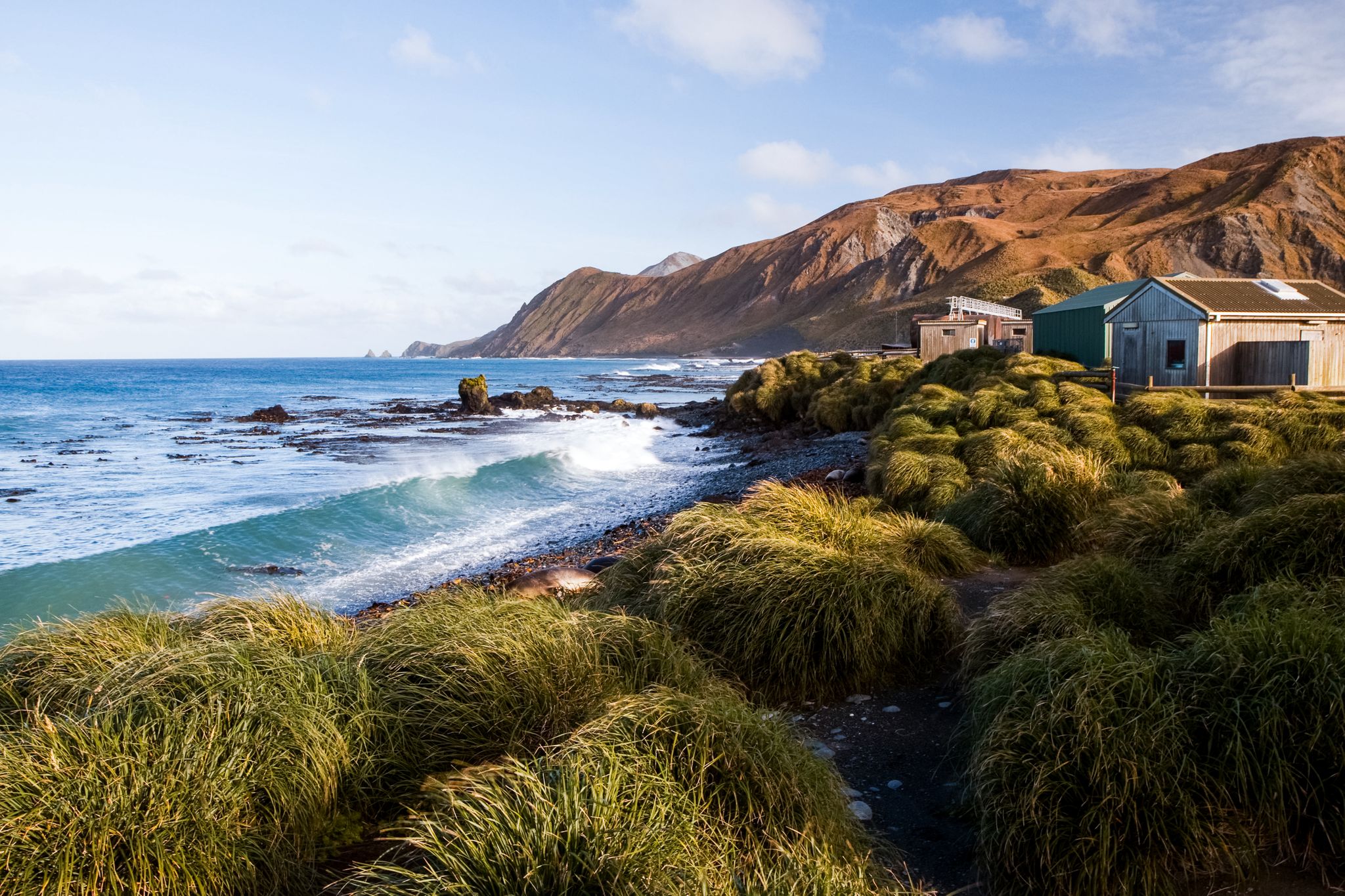Case study Improving Australia’s resilience to storm cluster disaster events and coastal erosion
How Geoscience Australia developed a nationally applicable method for understanding storm cluster impact, providing better coastal erosion decision making.
Page last updated:31 August 2021

The problem
Mitigating against the cumulative impact of storm clusters on the Australian coastline
Coastal erosion due to storm surge is an ongoing problem for many areas of the Australian coast. More than 80% of Australians live within the coastal zone, with approximately 700,000 residences (or 6%) within 3 kilometres of the coast and in areas less than 5 metres above mean sea level.
The cumulative impact of successive storms (or storm clusters) is of particular concern to Australians because a series of events may not allow time for a beach to fully recover from the initial storm. This occurred in 1974 when a series of storms caused widespread coastal erosion and property damage along Australia's south-east coast.
The response of a beach to a storm and a storm cluster will depend largely on the physical characteristics of that particular beach, including sediment type, shoreline orientation and wave climate. It’s important that these characteristics and their interactions are understood so strategies to manage erosion, such as beach replenishment and re-vegetation, can be used most effectively.
The solution
Analysing storm cluster impact in areas heavily affected by coastal erosion
Over a 4-year period from July 2014 to June 2018, Geoscience Australia, in partnership with the Bushfire and Natural Hazards Cooperative Research Centre and the University of Queensland, undertook research at two locations where coastal erosion is an ongoing hazard for local communities:
- Old Bar on the central north coast of New South Wales, where erosion has led to property loss in recent years.
- Adelaide’s metropolitan beaches, such as Semaphore Beach, where erosion has been actively managed since the 1970s.
The project demonstrated the method for understanding the impact of storm clusters on the beach environment which can be applied at any other location nationwide - where suitable data is available - to support decision making to better protect valuable coastal assets.
Data and tools developed as part of this project are openly accessible and supporting documents and use-cases have been provided to enable new users to adapt the tools to their needs.
How we got there
Collating topographical, geographical, bathymetric, geological and geomorphological data
As the coast is forever changing under the forces of the tide, waves and wind, the project needed to understand how storm clusters may cause beach erosion. This was undertaken in the context of the coastal compartment, which defines the physical and process boundaries within which sediment movement occurs.
As such, the following material was collated for both the Old Bar and Adelaide beach sites:
- Locational information from the Australian Sediment Compartments Dataset
- High-resolution digital elevation data using Geoscience Australia’s Elevation Information System (ELVIS).
- Information on local infrastructure from Geoscience Australia’s National Exposure Information System (NEXIS) spatial and survey dataset.
- National Coastal Geomorphology Classification (NCGC) and Smartline dataset analysis which identified the nature of each location’s coastal landforms and determined its landform vulnerabilities.
- Storm history information for each site – gathered from waverider buoys, models which use wind records to estimate past wave heights, and open-source software Stormwavecluster to simulate synthetic storm events – used to model sediment movement along the coast.
- Shoreline EVOlution modelling, which estimated the response of each site’s sandy shoreline to successive storm events, accounting for cross-shore sand movement from the beach to the nearshore, and long-shore sand movement along the beach. It also factored in changes in wave direction and height that occurred as waves enter shallow water.
- Geological data showing how the locations had evolved over time, including beach profiles (the measurement of the beach elevation from the dune to the ocean), beach thickness measurements from Ground Penetrating Radar surveys and sediment classifications from beach samples
- Satellite imagery and aerial photography.
Geoscience Australia works with state and local governments and the emergency management industry sector across Australia to develop local hazard assessments. For more information, contact hazards@ga.gov.au
Looking forward
A nationally applicable method for assessing coastal erosion impacts
- By demonstrating an understanding of the impact of storm clusters on the beach environment at two coastal-erosion-affected Australian locations (Old Bar, NSW and Adelaide, SA), Geoscience Australia and partners can now apply the methods used during the study at any location nationally where suitable data is available. This decision-making support to better protect valuable Australian coastal assets is invaluable.
- Coastal managers across Australia are now using a toolkit consisting of proven scientific methods and technical guidelines to find site-specific solutions to coastal erosion, particularly in areas where storm clusters are a possible driver of shoreline change. Infrastructure assets found to have a high exposure risk level are now readily identifiable and have included residential buildings, surf clubs, roads, carparks, beach access paths, stairs, sea walls, groynes and sewer outflows. Management strategies have been instigated to prevent future damage to these structures.
- Government and council coastal managers now have access to modelling techniques to show estimates of the shoreline position and sand volumes that may be eroded from the beach during individual storms or a storm cluster, and the subsequent effects of repeated cycles of storm erosion. They can now calculate the volume of sand required to maintain a buffer of sediment to protect their beaches or dunes against large storms. Access to this new information is helping them develop more targeted beach replenishment programs and recovery plans for specific sections of coastline.
- Scientific estimates of beach erosion caused by storm clusters can now be used to inform management strategies for mitigating the hazard into the future.
How we can help you
Contact us to gain a better understanding of the coastal erosion hazard risk in your state, region or sector, so you can develop targeted and effective risk mitigation and risk reduction strategies.
Our storm cluster and coastal erosion resources can help identify your region’s high-threat areas so you can make better-informed natural hazard decisions.
Email hazards@ga.gov.au











